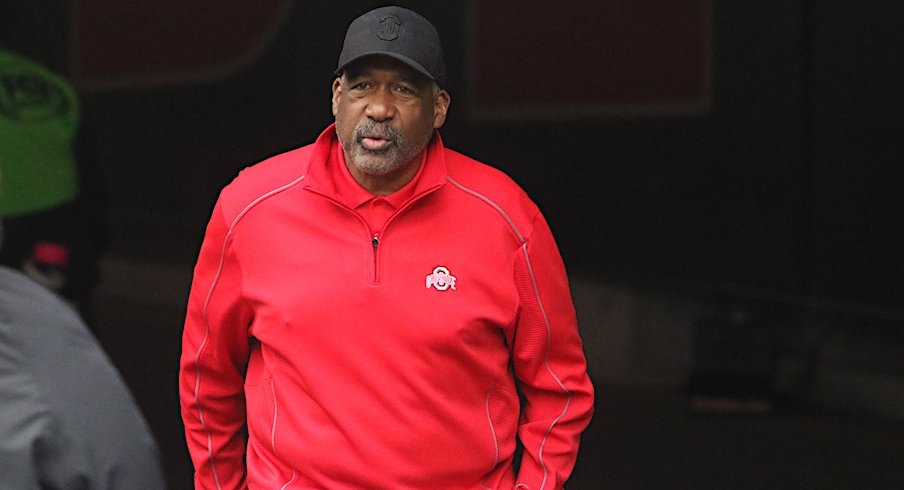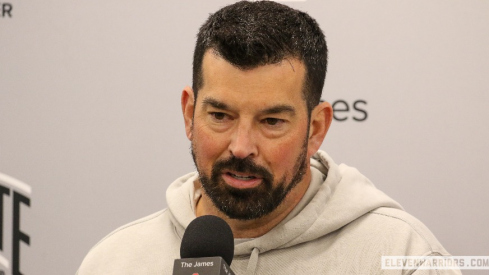The clock is ticking for NCAA, conference officials and university leaders to begin making decisions about if, when and how the college football season will proceed forward amid the ongoing COVID-19 pandemic.
As the calendar turns to July 1 – yes, 2020 is only halfway over – a pivotal month begins that could determine whether or not the college football season will begin on time in September and what measures will be in place for the safety of players, coaches and fans if and when the season takes place.
In his most recent teleconference with reporters in May, Ohio State athletic director Gene Smith said he believed decisions about the Buckeyes’ schedule would need to be made sooner than later once July begins.
“We need to allow time, which in my view may take all of June,” Smith said then. “But I think somewhere in early July, we need to have clarity on what we're doing because, one, we need to think about the student-athletes and their families and what their schedule looks like in their world. Then, of course, we need to consider the operational time that needs to be put in place to manage whatever we ultimately do. So I would say early July would be our time period.”
Ohio State and the NCAA have made some significant steps since then that have, at minimum, kept hope alive that the season could start on time this fall. Ohio State announced in early June that students will be back on campus for an on-time start to in-person fall semester classes. Buckeye football players returned to the Woody Hayes Athletic Center for voluntary workouts on June 8, and the NCAA’s Division I Council recently approved a preseason practice plan that will allow teams to begin required workouts and walk-through practices later this month.
That said, there’s still a lot that needs to happen – and a lot of questions that need to be answered – just for those practices to be able to start on time, let alone the opening weekend of games.
NCAA president Mark Emmert and Big Ten commissioner Kevin Warren both expressed confidence in interviews last week that there will be a college football season played this fall, but they also acknowledged it won’t be a normal season.
“I certainly think that sitting here today, there will be football in the fall,” Emmert told The Athletic’s Seth Davis. “The situation is obviously very, very fluid. What we do know for sure is that whatever occurs, it’s going to be different. We’re not going to be able to have football in the same way that we’re accustomed to seeing it year in and year out. It’s all going to come down to whether or not it can be done in a safe fashion.”
Warren told HBO’s Real Sports with Bryant Gumbel that “what we’re planning is to start on time, but there’s so many parts, this is a fluid situation.”
“Always in the backdrop, we have to be mindful of the medical impact,” Warren said. “Because we are at a collective inflection point in society, that we need to come together to make sure that we understand that everything we do, everything we say, all of our decisions matter.”
Going into July, perhaps the biggest question that still needs to be answered is just how exactly football practices and games can resume in a way that mitigates the risk of team-wide COVID-19 outbreaks.
While football players at Ohio State and most other Football Bowl Subdivision schools have returned to voluntary on-campus workouts, there’s a big difference between players lifting weights in small, physically-distanced groups – Ohio State is limiting its workout groups to nine athletes or fewer with one instructor – and practicing football together as a full team, with walkthroughs currently set to begin on July 24 for teams that play their season openers on Sept. 5.
There are ways that college football teams could modify their practices to keep some players separated from others, but to some extent, physical distancing will become impossible once players start sharing footballs, blocking and tackling again, which will increase the likelihood that one player who contracts COVID-19 will spread it to his teammates.
Ohio State tested all of its athletes upon their returns to campus, but it remains unclear how frequently the program and other schools plan to test their athletes during the season. And it's still uncertain just how much teams’ seasons could be impacted if their players test positive. If even one player tests positive, potentially exposing his entire team to COVID-19, will that be enough to force a team to stop playing for two weeks? Would it have the same effect on opponents that team has played that might have potentially been exposed, too?
Realistically, a season can’t proceed forward if one positive test is enough to bring it to a screeching halt, so a level of acceptable risk will need to be determined. But there still haven’t been any concrete answers about how the season will proceed forward in that regard, and with some teams scheduled to play before the end of August – with those teams also potentially beginning required workouts as early as next week – those answers need to start coming in short order.
Given that those answers aren’t in place yet, it’s very possible the start of the season could be delayed and/or the season could be shortened altogether. According to Lettermen Row’s Austin Ward, the Big Ten has discussed the possibility of playing a conference-only schedule this season, which could theoretically mean starting the season two or three weeks later.
That could also enable the Big Ten to put uniform policies in place that would govern how all conference games are played this season, and ensure that all 14 Big Ten teams are playing under the same rules and safeguards without being exposed to opponents from conferences that might not have the same restrictions or safety measures in place.
Any modifications to the schedule will need to be made within the next few weeks, however, so that Ohio State and all other affected schools can plan accordingly. Like Smith, Nebraska athletic director Bill Moos and LSU athletic director Scott Woodward are among other athletic department leaders who have said those decisions need to be made no later than mid-July.
“I think somewhere in early July, we need to have clarity on what we're doing because, one, we need to think about the student-athletes and their families and what their schedule looks like in their world. Then, of course, we need to consider the operational time that needs to be put in place to manage whatever we ultimately do.”– Gene Smith
Beyond whether it’s safe for players to resume actual football practices later this month and to play games in September, the other big decision that of course still needs to be made is whether fans will be allowed to attend games this season.
Smith has expressed optimism that Ohio Stadium will be able to host as many as 40,000 to 50,000 fans this season. That will not be possible, however, unless federal and state restrictions on mass gatherings – which led to the cancellation of the NFL's Hall of Fame Game, scheduled for Aug. 6 in Canton, Ohio, just last week – are relaxed by the time the season starts.
“We’re adhering to the guidelines of our state and the CDC,” Smith said on HBO. “Now I’m hopeful, as we get closer to potentially playing this fall, that that six-foot distancing would be reduced to another number that might get us up to maybe 40,000-50,000 fans.”
We want to see you back in The Shoe in this fall!
— gene smith (@OSU_AD) July 1, 2020
Please do your part and wear your masks ! #GoBuckeyes pic.twitter.com/T92D3g34v6
While those decisions certainly could remain fluid into August and even into the season, and each school will be at the mercy of its individual state’s guidelines, plans for fans will need to be in place before long so that schools can determine how they will distribute tickets and ensure that they are prepared to host what will certainly be modified game days if they are allowed to have fans in the stands this year.
No matter what decisions are made over the next few weeks, everyone in college football will still need to be prepared to adapt. In the midst of a pandemic unlike any seen in the United States in the last 100 years, college football teams must be prepared to deal with unprecedented challenges and potential last-minute changes even if it’s deemed safe enough for them to play their seasons as scheduled.
The next few weeks, though, should at least give us an idea of the direction in which things will likely be headed for this fall. And if teams are going to start practicing by the end of the month and playing games in approximately two months, it’s crucial that everyone involved in making college football happen gets on the same page and figures out its plan as soon as possible.


